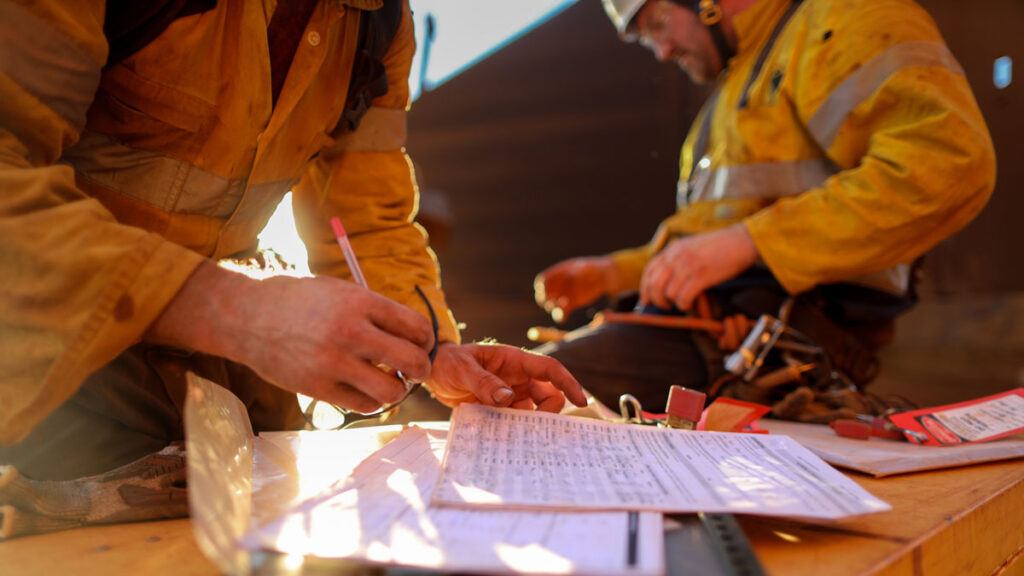If health and safety measures in the workplace aren’t performing, then the repercussions can be significant.
Fines, penalties and prosecutions can result from statutory breaches, but there can be a wider impact on employer/employee relations, operational efficiency, opportunity cost, customer relationships, and reputation. Ultimately, it’s the value of the business. Knowing how a business’s health and safety is performing is essential, but how would you go about it?

Measuring Safety Performance
Measurement is an important step in any management process and is the basis of continual improvement. If there is no reliable information to inform managers how well their health and safety risks are controlled, how can it be managed?
Measurement is an accepted part of the ‘plan-do-check-act’ management process and is as much a part of a health and safety management system as financial, production or service delivery management. The HSG 65 framework for managing health and safety at work shows where measuring performance fits within the overall health and safety management system.
Why are Performance Metrics Around Health and Safety So Important?
Health and safety differs from many areas measured by managers because success results in a lack of outcome (injuries or ill health) rather than a presence. But low injury or ill-health rate, is no guarantee that risks are being controlled and will not lead to injuries or ill health in the future. This is particularly true in business where there is a low probability of accidents, but major hazards are present.
This type of data, known as LAG indicators, tells us something after the event and is known as a REACTIVE indicator. These are important performance measures, but they don’t allow us to influence our safety environment. Given the potential consequences of events, it is also helpful to look at LEAD Indicators. These point to issues that could give rise to an event and are PROACTIVE Indicators.
What Lead Indicators Might I Want to Look at?
Conducting a health and safety risk assessment is key, as it allows you to identify the hazards and define the control measures and successfully implement. These could be engineering controls, safe working procedures, safety checklists, training, or PPE that protect the workforce, the public, and the business.
Lead indicators are comprised of 2 types of metrics:
- Metrics that tell us about a level of activity that needs to happen as part of our safety organisation and
- Metrics that tell us about the performance of activity within our safety organisation.
LEAD indicators might be:
- How many Risk Assessments have been proactively monitored in a given period against a monitoring regime?
- How many of the control measures defined in a Risk Assessment are in operation and being complied with?
Here are some examples of lead performance metrics:
Risk Assessments: If you have a risk assessment which details 20 control measures and only 10 of these are in place, then as a simple measure, you are only achieving a 50% performance against your risk assessment.
Employee training: Training can produce several Lead Indicators such as:
- What % of your training requirements are up-to-date?
- If you are testing employee’s knowledge, what is % competency?
- If you use an E-Learning suite that incorporates a self-assessment by the employee, then you can use this to capture discrete and valuable risk sampling.
Checklists: This gives you the % performance of desired outcomes. For example, you could score your safety checklist based on the number of breaches or problems that need rectifying. If a checklist score fails 10 out of 100 items covered, they scored 90%. It could be something simple such as a sign was missing, an induction hadn’t been carried out, or someone didn’t have the right PPE on. If the next time that site is checklist scored, they score 95%, you have measured an improvement.
Audit - Providing it captures quantitative data, can also produce a performance score.
PPE - Metrics could come from what % of issued PPE needs to be maintained, replaced, or checked.
Planned, Preventative Maintenance - What % of negative outcomes.
Near Miss/Incident Activity - Measuring the number of near misses reported will give an indication of whether the workforce has embraced the health and safety measures in the workplace. If there are a lot of reports the first month and hardly any the second, it might indicate issues have been resolved. Or it might mean staff have lost interest. Under-reporting near-misses may result in a need for further health and safety training, involvement, or improvements to the system itself.
Hazard spotting - This can indicate engagement from within the business. What you are measuring is not the absence of hazards, but that a target number of hazards are being reported. A target of 200 employee identified hazards is the benchmark, and anything below indicates a lack of awareness or engagement.
How Do I Get Started?
Performance reporting is available through management systems, so if you’d like to understand what’s possible regarding health and safety measures in the workplace, please speak to your local Arch contact regarding Arch Business Protection.